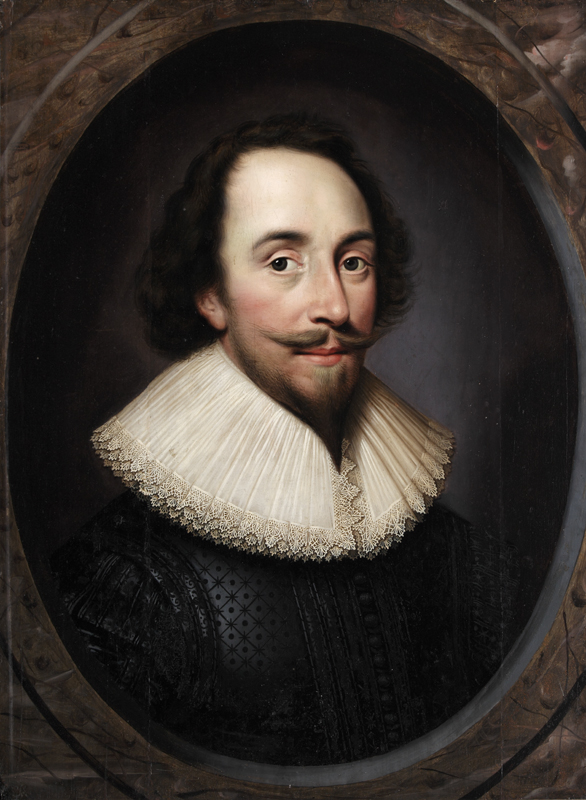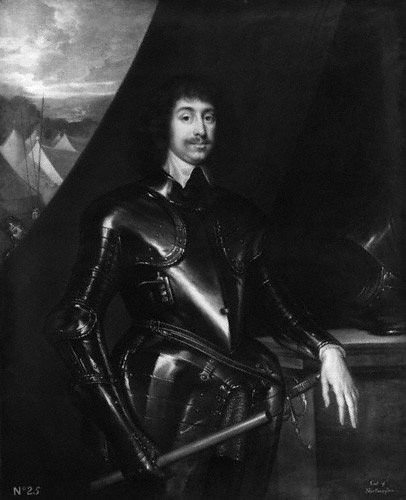Spencer Compton, 2nd Earl of Northampton on:
[Wikipedia]
[Google]
[Amazon]
 Spencer Compton, 2nd Earl of Northampton (May 160119 March 1643), styled Lord Compton from 1618 to 1630, was an
Spencer Compton, 2nd Earl of Northampton (May 160119 March 1643), styled Lord Compton from 1618 to 1630, was an
/ref> He was created a
 On the outbreak of the
On the outbreak of the
 Spencer Compton, 2nd Earl of Northampton (May 160119 March 1643), styled Lord Compton from 1618 to 1630, was an
Spencer Compton, 2nd Earl of Northampton (May 160119 March 1643), styled Lord Compton from 1618 to 1630, was an English
English usually refers to:
* English language
* English people
English may also refer to:
Peoples, culture, and language
* ''English'', an adjective for something of, from, or related to England
** English national ide ...
soldier and politician who sat in the House of Commons
The House of Commons is the name for the elected lower house of the bicameral parliaments of the United Kingdom and Canada. In both of these countries, the Commons holds much more legislative power than the nominally upper house of parliament. ...
from 1621 to 1622. He became a peer by writ of acceleration in 1626 and by inheritance in 1630. He fought in the Royalist
A royalist supports a particular monarch as head of state for a particular kingdom, or of a particular dynastic claim. In the abstract, this position is royalism. It is distinct from monarchism, which advocates a monarchical system of governme ...
army and was killed in action at the Battle of Hopton Heath
The battle of Hopton Heath was a battle of the First English Civil War, fought on Sunday 19 March 1643 between Parliamentarian forces led by Sir John Gell and Sir William Brereton and a Royalist force under Spencer Compton, 2nd Earl of N ...
.
Life
Northampton was the son ofWilliam Compton, 1st Earl of Northampton
William Compton, 1st Earl of Northampton, KG (died 24 June 1630), known as 2nd Baron Compton from 1589 to 1618, was an English nobleman, peer, and politician.
Northampton was the son of Henry Compton, 1st Baron Compton, and Frances Hastings. ...
, and his wife Elizabeth, daughter and heir of Sir John Spencer, Lord Mayor of London
The Lord Mayor of London is the mayor of the City of London and the leader of the City of London Corporation. Within the City, the Lord Mayor is accorded precedence over all individuals except the sovereign and retains various traditional powe ...
.Record for ''Spencer Compton, 2nd Earl of Northampton'' on ''thepeerage''/ref> He was created a
Knight of the Bath
The Most Honourable Order of the Bath is a British order of chivalry founded by George I on 18 May 1725. The name derives from the elaborate medieval ceremony for appointing a knight, which involved bathing (as a symbol of purification) as one ...
on 3 November 1616. In 1621 he was elected Member of Parliament
A member of parliament (MP) is the representative in parliament of the people who live in their electoral district. In many countries with bicameral parliaments, this term refers only to members of the lower house since upper house members of ...
for Ludlow
Ludlow () is a market town in Shropshire, England. The town is significant in the history of the Welsh Marches and in relation to Wales. It is located south of Shrewsbury and north of Hereford, on the A49 road which bypasses the town. The t ...
. Also in 1621, he was appointed Master of the Robes to the Prince of Wales
Prince of Wales ( cy, Tywysog Cymru, ; la, Princeps Cambriae/Walliae) is a title traditionally given to the heir apparent to the English and later British throne. Prior to the conquest by Edward I in the 13th century, it was used by the rulers ...
and attended the latter in the adventure to Spain in 1623. He warmly supported the king in the Scottish expeditions, at the same time giving his advice for the summoning of the parliament, which "word of four syllables" he declared was "like the dew of heaven". In 1626, he became Baron Compton
Baron Compton is an abeyant title in the Peerage of England, meaning that inheritance of the title stopped because there was no legal priority as to which daughter would inherit the title. The title was created in 1572 for the Tudor politician, ...
by writ of acceleration. In 1630 he inherited the Earldom
Earl () is a rank of the nobility in the United Kingdom. The title originates in the Old English word ''eorl'', meaning "a man of noble birth or rank". The word is cognate with the Scandinavian form ''jarl'', and meant "chieftain", particular ...
on the death of his father in 1630 and assumed his duties as Lord Lieutenant of Gloucestershire
This is a list of people who have served as Lord Lieutenant of Gloucestershire. Since 1694, all the Lord Lieutenants have also been Custos Rotulorum of Gloucestershire.
* Edmund Brydges, 2nd Baron Chandos 1559–?
*Giles Brydges, 3rd Baron Chando ...
and Lord Lieutenant of Warwickshire
This is an incomplete list of people who have served as Lord Lieutenant of Warwickshire. Since 1728, all Lord Lieutenants have also been Custos Rotulorum of Warwickshire.
Lord Lieutenants of Warwickshire
*Ambrose Dudley, 3rd Earl of Warwick 1569� ...
.
Military career
 On the outbreak of the
On the outbreak of the English Civil War
The English Civil War (1642–1651) was a series of civil wars and political machinations between Parliamentarians (" Roundheads") and Royalists led by Charles I ("Cavaliers"), mainly over the manner of England's governance and issues of re ...
, Northampton was entrusted with the execution of the Commission of Array
A commission of array was a commission given by English sovereigns to officers or gentry in a given territory to muster and array the inhabitants and to see them in a condition for war, or to put soldiers of a country in a condition for military ...
in Warwickshire
Warwickshire (; abbreviated Warks) is a county in the West Midlands region of England. The county town is Warwick, and the largest town is Nuneaton. The county is famous for being the birthplace of William Shakespeare at Stratford-upon-Avon an ...
. After varying success and failure in the English Midlands
The Midlands (also referred to as Central England) are a part of England that broadly correspond to the Kingdom of Mercia of the Early Middle Ages, bordered by Wales, Northern England and Southern England. The Midlands were important in the Ind ...
, he fought at the Battle of Edgehill
The Battle of Edgehill (or Edge Hill) was a pitched battle of the First English Civil War. It was fought near Edge Hill and Kineton in southern Warwickshire on Sunday, 23 October 1642.
All attempts at constitutional compromise between K ...
and, after Charles I of England
Charles I (19 November 1600 – 30 January 1649) was King of England, Scotland, and Ireland from 27 March 1625 until Execution of Charles I, his execution in 1649. He was born into the House of Stuart as the second son of King James VI of ...
's return to Oxford, was given, in November 1642, the military supervision of Banbury
Banbury is a historic market town on the River Cherwell in Oxfordshire, South East England. It had a population of 54,335 at the 2021 Census.
Banbury is a significant commercial and retail centre for the surrounding area of north Oxfordshire ...
and the neighbouring country. He was attacked in Banbury by the parliamentary forces on 22 December, but relieved by Prince Rupert of the Rhine
Prince Rupert of the Rhine, Duke of Cumberland, (17 December 1619 (O.S.) / 27 December (N.S.) – 29 November 1682 (O.S.)) was an English army officer, admiral, scientist and colonial governor. He first came to prominence as a Royalist cavalr ...
the next day.
In March 1643, he marched from Banbury to relieve Lichfield
Lichfield () is a cathedral city and civil parish in Staffordshire, England. Lichfield is situated roughly south-east of the county town of Stafford, south-east of Rugeley, north-east of Walsall, north-west of Tamworth and south-west of B ...
and, having failed there, proceeded to Stafford
Stafford () is a market town and the county town of Staffordshire, in the West Midlands region of England. It lies about north of Wolverhampton, south of Stoke-on-Trent and northwest of Birmingham. The town had a population of 70,145 in t ...
, which he occupied. Thence on 19 March, accompanied by three of his sons, he marched out with his troops and engaged Sir John Gell, 1st Baronet
Sir John Gell, 1st Baronet (22 June 1593 – 26 October 1671) was a British landowner from Derbyshire who acted as local Parliamentarian commander for most of the First English Civil War before resigning in May 1646. He was notorious for parad ...
and Sir William Brereton at the Battle of Hopton Heath
The battle of Hopton Heath was a battle of the First English Civil War, fought on Sunday 19 March 1643 between Parliamentarian forces led by Sir John Gell and Sir William Brereton and a Royalist force under Spencer Compton, 2nd Earl of N ...
.
He put to flight the enemy's cavalry and took eight guns, but in the moment of victory, while charging too far in advance, he was surrounded by the parliamentarian soldiers. To those who offered him a quarter, he answered that he scorned to take a quarter from such base rogues and rebels as they were, whereupon he was slain by a blow on the head. Edward Hyde, 1st Earl of Clarendon
Edward Hyde, 1st Earl of Clarendon (18 February 16099 December 1674), was an English statesman, lawyer, diplomat and historian who served as chief advisor to Charles I during the First English Civil War, and Lord Chancellor to Charles II from ...
, describes his loss as a great one to the cause.
Personal life
Northampton married Mary, daughter of Sir Francis Beaumont (not the playwright), by whom he had two daughters and six sons. The eldest son,James
James is a common English language surname and given name:
*James (name), the typically masculine first name James
* James (surname), various people with the last name James
James or James City may also refer to:
People
* King James (disambiguat ...
, succeeded him as 3rd Earl of Northampton. Henry
Henry may refer to:
People
*Henry (given name)
* Henry (surname)
* Henry Lau, Canadian singer and musician who performs under the mononym Henry
Royalty
* Portuguese royalty
** King-Cardinal Henry, King of Portugal
** Henry, Count of Portugal, ...
became bishop of London
A bishop is an ordained clergy member who is entrusted with a position of authority and oversight in a religious institution.
In Christianity, bishops are normally responsible for the governance of dioceses. The role or office of bishop is ca ...
. Charles, William
William is a male given name of Germanic origin.Hanks, Hardcastle and Hodges, ''Oxford Dictionary of First Names'', Oxford University Press, 2nd edition, , p. 276. It became very popular in the English language after the Norman conquest of Engl ...
and Spencer all distinguished themselves in the king's cause—William was one of the original members of the Royalist organisation, The Sealed Knot
The Sealed Knot was a secret Royalist association which plotted for the Restoration of the Monarchy during the English Interregnum. The group was commissioned by King Charles II between November 1653 and February 1654 from his exile in Paris fo ...
.
References
Attribution: * , - , - {{DEFAULTSORT:Northampton, Spencer Compton, 2nd Earl Of 1601 births 1643 deaths 02 03 Cavaliers English military personnel killed in action Knights of the Bath Lord-Lieutenants of Gloucestershire Lord-Lieutenants of Warwickshire Compton, Spencer Compton, Lord Spencer Alumni of Queens' College, Cambridge People killed in the English Civil War Royalist military personnel of the English Civil War